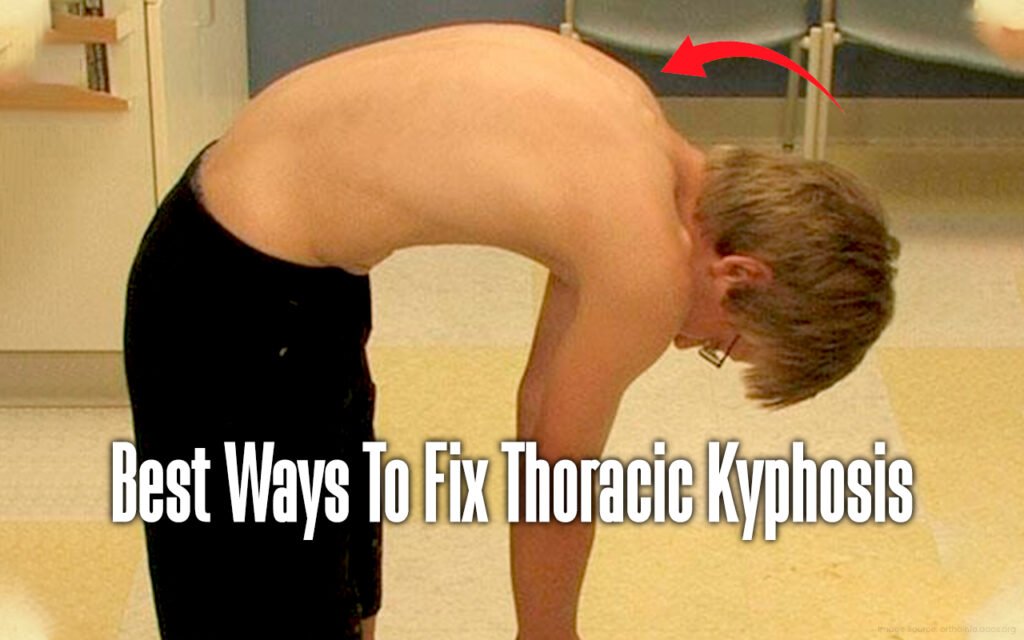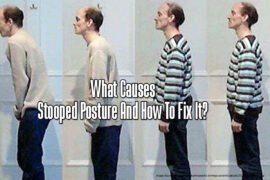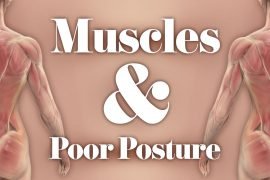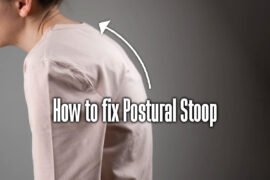Causes Of Thoracic Kyphosis
Table of Contents
Here are the common causes of Thoracic Kyphosis:
- Aging: As we age, the spinal discs between our vertebrae lose water content and elasticity, leading to a loss of height in the spine and an increase in thoracic kyphosis.
- Osteoporosis: Osteoporosis condition causes bones to become brittle and weak and brittle, which can lead to compression fractures in the vertebrae, contributing to thoracic kyphosis.
- Scheuermann’s disease: Scheuermann’s disease is a condition that affects the development of the spine in children and adolescents, leading to an increased curvature of the spine and thoracic kyphosis.
- Ankylosing spondylitis: Ankylosing spondylitis is an arthritis type that mainly affects the spine, causing inflammation and forming new bone tissue, which can contribute to thoracic kyphosis.
- Spinal cord injuries: Spinal cord injuries cause paralysis or muscle weakness that supports the spine, leading to an increase in thoracic kyphosis.
- Congenital disorders: Some congenital disorders, such as Marfan syndrome, can affect the development of the spine and contribute to thoracic kyphosis.
Symptoms Of Thoracic Kyphosis
The symptoms of thoracic kyphosis can vary depending on the severity condition, but some common ones include:
- Rounded or hunched back: The most obvious sign of thoracic kyphosis is a rounded or hunched back, which can make the shoulders and neck appear to be pushed forward.
- Back pain: Many people with thoracic kyphosis experience back pain, which can be localized to the upper back, shoulder blades, or neck.
- Stiffness: The curvature of the spine can cause stiffness in the upper back, making it difficult to move or turn the neck and shoulders.
- Breathing difficulties: In severe cases of thoracic kyphosis, the spine’s curvature can compress the lungs and make it difficult to breathe properly.
- Fatigue: The constant strain on the back muscles can cause fatigue, making it difficult to perform everyday tasks.
- Headaches: The poor posture associated with thoracic kyphosis puts extra pressure on the neck and head, leading to headaches.
- Tingling or Numbness: Sometimes, the curvature of the spine can put pressure on nerves, leading to tingling or numbness sensations in the arms or legs.
How To Diagnose Thoracic Kyphosis
The following are some ways to diagnose thoracic kyphosis:
- Physical Examination: A doctor or healthcare provider can perform a physical examination to check for thoracic kyphosis signs. During the examination, they will evaluate your posture and range of motion, look for any visible curvature in your upper back, and check for any muscle weakness or stiffness.
- X-rays: X-rays are often used to diagnose thoracic kyphosis. They provide images of the bones in the spine and can show any abnormalities or curvature.
- Magnetic Resonance Imaging (MRI): An MRI uses powerful magnets and radio waves to make detailed spine images. It can show any damage to the spinal cord or nerves and any abnormalities in the spinal bones.
- CT Scan: A CT scan is similar to an X-ray, but it provides more detailed images of the spine. It can show any abnormalities or damage to the spinal cord or nerves.
- Bone Density Test: A bone density test measures the strength of your bones and can determine if you have osteoporosis, which can cause or exacerbate thoracic kyphosis.
Best Exercises To Fix Thoracic Kyphosis
Superman
Doing this exercise may improve your posture and enhance strength and core muscle flexibility. Assume a prone position and stretch your arms out in front of your head. Then, slowly keep your head in a neutral position by looking downwards. Then gently raise your arms and legs towards the ceiling. Your hands and feet should feel like they are reaching away from your body. Hold for three seconds. Repeat 10 times.
Chest Stretch
Release the tightness in the shoulders and chest. Please stand facing the wall, extend your right arm, and then place your hand on the wall. Please ensure that your arm is aligned with your shoulder. Rotate your body towards the left and lean forward until you experience a stretching sensation in your chest and shoulder. Please hold your right arm for 30 seconds and then repeat the chest stretch exercise with your left arm while turning your body to the right. Perform three sets on each side.
Close Grip Row
This Close grip row exercise involves using a resistance band to strengthen your upper torso and shoulders. Take the band and secure it firmly around a stationary object at the level of your chest. Start moving backward until you sense a moderate level of resistance in the band. Assume a stance with your feet apart at the width of your shoulders, and stretch out your arms while maintaining a little bend in your knees. This message advises you to maintain good posture by keeping your head up, shoulders back, chest out, and abs and back tight. Then, slowly squeeze your shoulder blades together and pull the bands toward your sides slowly. Extend your arms fully while resisting the band during exercise. Please perform three rounds consisting of 15 repetitions each.
Mirror Image
Assume a standing position with your back against a wall and slightly pull your chin in, aligning your head with your shoulders. Make sure to lower and pull back your shoulder blades. Maintain this position for 30 seconds to one minute.
Upper Back Foam Rolling
This exercise can help you improve the mobility of your spine and fix any rounding in your shoulders. Lie down on the floor & position the foam roller across your spine, specifically below your shoulder blades. Assume a position with your knees bent and feet firmly on the ground. Place your hands behind your head. Lift your hips off the ground & roll forward towards your feet. The roller will move slowly toward your neck. Please turn the other way slowly as well. If you come across stiff areas, pause and roll back and forth over that area for 10 to 15 seconds. You need to do three sets. It is very normal to feel uncomfortable in the beginning, but eventually, you will observe an improvement in your upper back’s mobility.
Remedies For Excessive Thoracic Kyphosis
Here are some remedies that may help alleviate the symptoms of excessive thoracic kyphosis:
- Exercise: Exercises that strengthen the muscles of the upper back, shoulders, and neck can help improve posture and reduce the severity of thoracic kyphosis. These may include shoulder blade squeezes, chin tucks, scapular retractions, and exercises that target the muscles between the shoulder blades.
- Stretching: Stretching exercises can help improve mobility and flexibility in the upper back, shoulders, and chest. Examples include chest stretches, upper back stretches, and neck stretches.
- Posture correction: Correcting posture habits that contribute to thoracic kyphosis can help reduce its severity. This may include sitting with a straight back, keeping the shoulders down and back, and avoiding slouching.
- Ergonomic adjustments: Adjusting the ergonomics of your workspace and home environment can help reduce the strain on your upper back and shoulders. This may include adjusting the height of your computer monitor or desk, using a standing desk, or using an ergonomic chair.
- Manual therapy: Manual therapy techniques, like massage, chiropractic adjustments, or physical therapy. It can help improve mobility in the spine and reduce pain associated with thoracic kyphosis.
- Bracing: In severe cases of thoracic kyphosis, a brace or orthotic device may be used to help support the spine and improve posture.
Remove the underlying habits that lead to Thoracic Kyphosis
Several activities have been outlined above to help cure thoracic kyphosis, but you can only fix it by first recognizing the source of the problem. This implies eradicating the undesirable habits that led to thoracic kyphosis in the first place. Poor habits are one of the most common causes of postural kyphosis. As a result, thoracic kyphosis is always lurking around the corner if you don’t change your bad habits for good.
Here are a few pointers:
- Take frequent breaks to get your blood flowing, and sit on a stability ball chair or a kneeling chair while at work to avoid slouching. A standing desk may also be beneficial.
- Hold your feet flat on the floor as you sit back in your seat. Consider investing in lumbar support for your chair.
- Sleeping on your back helps to straighten out your spine, which is beneficial in preventing negative posture habits during sleep.
- Please take a look at your posture frequently during the day, or write it down on your phone or at your workstation to remind you to sit and stand up straight.
- Doing too many abdominal crunches without stretching or balancing your abs with upper back exercises can also worsen thoracic kyphosis. Avoid crunches while you work on relieving thoracic kyphosis to allow your abs to lengthen out.
- Once you’ve treated thoracic kyphosis, you must do everything possible to keep it from recurring. Please take note of any undesirable habits that cause you to slouch and modify them.
To counteract any slouching and promote good muscle balance, continue performing the thoracic kyphosis exercises described in this article. Be persistent. It’ll take time for your body to get back to this state, and it won’t change overnight. If you have thoracic kyphosis, you’ve been dealing with your posture for a long time.
A hunchback condition must be treated with corrective exercises, so get started now and avoid the detrimental consequences of poor posture in the future. If your posture is severely bad, you should get physical therapy from a professional who will design you with the proper exercise regimen.
Things To Take Care Of While Suffering From Thoracic Kyphosis
Here we show you some things that you must take care of yourself while suffering from thoracic kyphosis:
- Exercise: Strengthening exercises, particularly for the upper back and core muscles, can help improve posture and reduce pain. Consult with your physical therapist for a personalized exercise plan.
- Stretching: Regular stretching of the chest, neck, and shoulder muscles can help improve flexibility and reduce tightness.
- Posture correction: Make a conscious effort to sit and stand up straight, then your shoulders back down and your chin tucked in slightly.
- Ergonomics: Make sure that your workspace is set up correctly to reduce strain on your neck and upper back. This includes adjusting the height of your desk and computer monitor.
- Pain management: Over-the-counter pain medications or topical treatments like heat or cold therapy can help alleviate pain and discomfort.
- Supportive devices: A brace or back support can help improve posture and provide additional support.
- Lifestyle changes: Avoiding activities that exacerbate your symptoms, maintaining a healthy weight, and quitting smoke can all help improve the condition.
FAQs
Q1. Is thoracic kyphosis curable?
If kyphosis is not treated, it can worsen and result in a noticeable deformity of the spine. The objective of treating kyphosis is to alleviate symptoms and halt further curving, as it is not curable.
Q2. At what age does thoracic kyphosis occur?
As a person reaches their 40s, the kyphosis angle tends to worsen and may exceed 40°, resulting in a significant curvature called “age-related hyperkyphosis.” Hyperkyphosis is present in 20-40% of adults over the age of 60.
Q3. Can you fix kyphosis in adults?
There are various treatments available for adult kyphosis, such as conservative methods or surgical correction of the spine. The first line of treatment, which is conservative, involves the use of medications, exercises, casts, and support braces for the spine.
Q4. Does thoracic kyphosis decrease height?
As we age, it’s very common to experience some degree of height loss. However, if the loss of height is more than what is typical, it may be caused by spinal malalignment resulting from spinal kyphosis and scoliosis.
Q5. How common is thoracic kyphosis?
A lot of older adults have hyperkyphosis, which means their thoracic spine is curving forward too much. This condition is well-known and affects between 20% to 40% of older adults.
Q6. What deficiency causes kyphosis?
Vitamin D-deficient perinatal diets were found to produce offspring with increased spinal kyphosis (Table IV).
Conclusion
In conclusion, thoracic kyphosis is a common condition that affects the curvature of the upper spine. While some degree of thoracic kyphosis is normal, excessive curvature can lead to pain, discomfort, and a range of other physical symptoms. There are various causes of this posture, including poor posture, osteoporosis, and certain medical conditions. Treatment options depend on the seriousness of the condition and can range from exercise and physical therapy to surgery. It is important to take medical attention if you suspect you have thoracic kyphosis, as early intervention can help prevent further progression of the condition and improve quality of life. Individuals with thoracic kyphosis can manage their symptoms and lead a healthy, active life by maintaining good posture, staying active, and seeking appropriate medical care.







